C64 DiskMagazine: Vandalism News #64
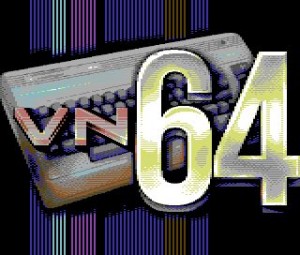 Onslaught / Offence / Vandalism News Staff, bring to you the 64th issue of the Vandalism News.
Onslaught / Offence / Vandalism News Staff, bring to you the 64th issue of the Vandalism News.
Download: Vandalism News #64 (1415)
source: csdb.dk
 Onslaught / Offence / Vandalism News Staff, bring to you the 64th issue of the Vandalism News.
Onslaught / Offence / Vandalism News Staff, bring to you the 64th issue of the Vandalism News.
Download: Vandalism News #64 (1415)
source: csdb.dk

This is the official demo party results from Flashback 2015 (Top 3 Entries only). See also the CSDB Flashback 2015 section for more informations and download.
C64 Demo:
C64 Music:
C64 Graphics:
Download: Flashback 2015 full Party stuff (1221)
source: csdb.dk
Defect:
Diagnosis/Repair:
Note1:
Note2:
Download:
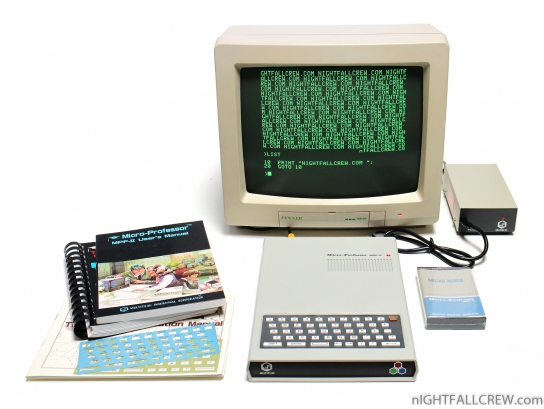
Microprofessor II (MPF II), introduced in 1982, was Multitech’s (later renamed Acer) second branded computer product and also one of the earliest Apple II clones. It does not look like most other computers. The case of the MPF II was a slab with a small chiclet keyboard on its lower part.
In 1983, the Multiprofessor II retailed in the UK for £269.00 including VAT.
One key feature of the MPF II was its Chinese BASIC, a version of Chinese-localized BASIC based on Applesoft BASIC. There was also a version sold in Europe that did not have Chinese localization.
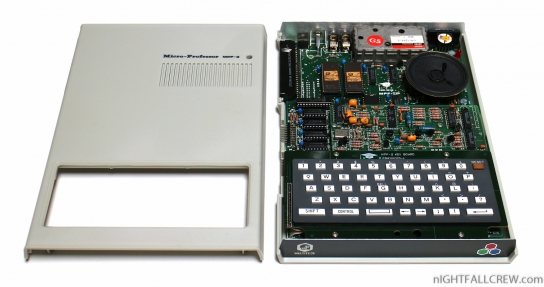
Differences to Apple II:
The MPF II was not totally compatible with the Apple II.
The MPF II did not have Apple II’s text mode. All the text was drawn on the screen by software rather than generated by hardware. It was the only cost-effective way to generate Chinese text on screen at a time when a hardware-based Chinese character generator could cost hundreds of U.S. dollars.
Like Apple II, MPF II had two graphics buffers. However the second buffer was at address A000H while with Apple II it was at 4000H. The keyboard input was mapped to a different address than the Apple II making impossible to play Apple’s games on the MPF II.
MPF-II keyboard interface was very simple and consisted of an 8 bit output port and an input port that were directly connected to keyboard matrix. The Apple joystick interface was not there, and instead the joystick appeared as a keyboard with arrow keys and two other buttons.
The external slot interface was also not compatible with the Apple II and could not use many standard interface cards including the Disk II controller.
Technical information:
Multitech Micro-Professor MPF-II – PapaTudo (Pacman Clone) by Microsoft:
Gallery:
Powersupply Pinout:
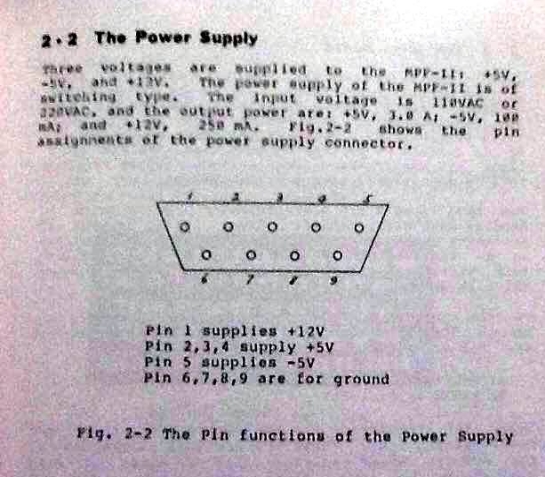
Multitech Micro-Professor MPF-II Loading TK-2000 Game:
source: wikipedia mpf-ii.blogspot.it TK-2000 games download
Atari The Educator
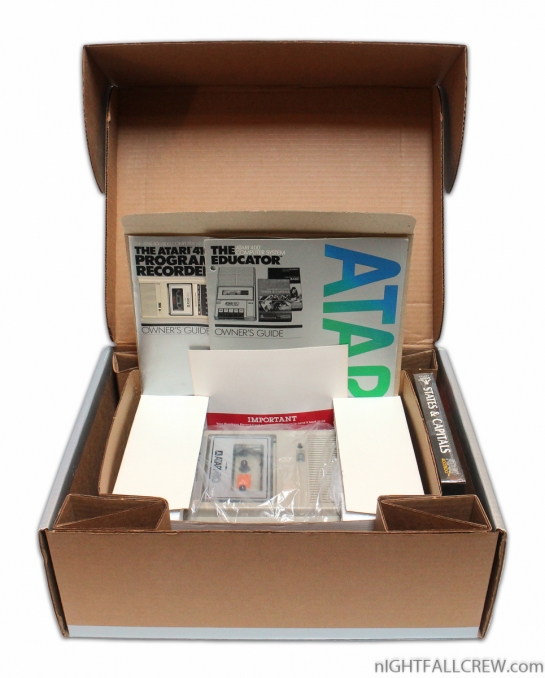
The package includes:
Download: Atari Educator Owners Guide (1696)
Atari 1025 80-Column Printer
Printer Specifications:
Atari 1030 Modem
With the introduction of Atari all new XL line of computers came the all new Atari 1030 direct connect modem. The modem had a very unique feature packed into it. Just like the Atari 850 interface, the Atari 1030 modem had not only its device driver in ROM which would automatically upload into the computers memory, but also its software as well.
The Atari 1030 came with an on-board software package called ModemLink which would automatically upload into the computers memory. However there was a catch, like all previous Atari software, ModemLink had no provisions for Uploading or Downloading software, also in order to use the on-board ModemLink software any disk drives that were connected to your system had to be turned OFF.
Later Atari 1030′s were packaged with “The New Atari 1030 Software Package” which was a diskette with Amodem, Tscope and DiskLink software. Amodem was written by Jim Steinbrecher of Atari telecom fame, Tscope was written by Joe Miller and was for use with Compuserve.
Gallery:
source: atarimuseum.com
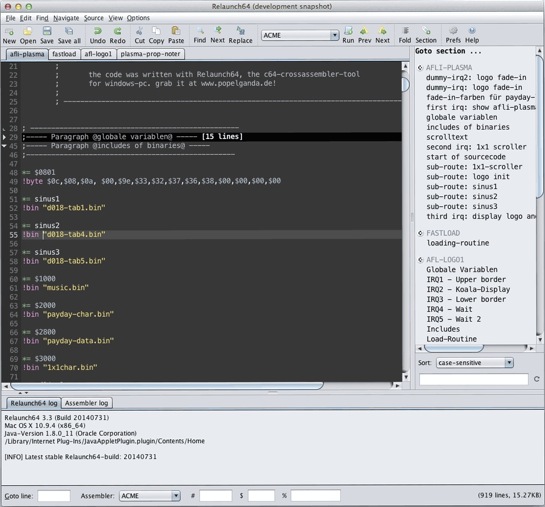
Relaunch64 is an IDE (text-editor) for C64 assembler-coding on Windows, Linux and Mac OS X. Relaunch64 has a clean and intuitive user interface, yet it offers many features that make coding faster and easier.
Java 7 or higher is required to run Relaunch64. The program is licensed under the GNU GPL 3 (or higher) and free for private and professional use.
This editor works together with common cross assemblers like Kick Assembler, ACME, or 64tass. Other assemblers might work as well, but syntax highlighting may not be 100% correct.
Download: Relaunch64 v3.3.3 (Windows/OSx/Linux) (1165)
source: popelganda.de
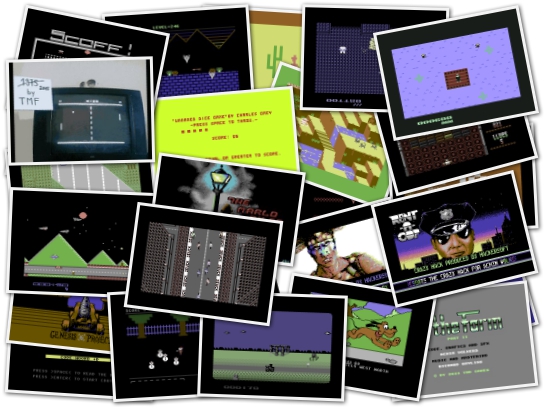
Some new games or tools (Cracked / Trained or Unrealeased) for Commodore 64 have been released from your favorites groups.
Titles:
Download: All Games in One Archive (3187)
source: csdb.dk
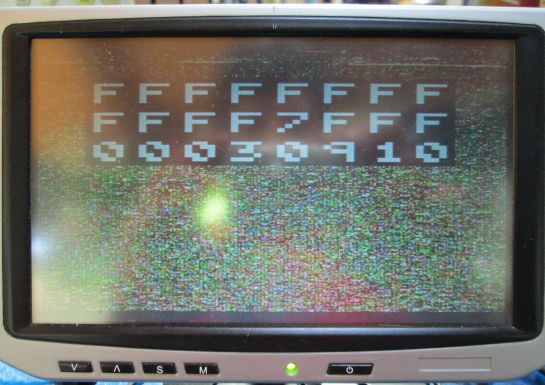
Explanation of how it work the program “RAM3_RAMFAIL_BAS” written by Dominic Brown in the 1990 in Super Basic for the Sinclair QL which is used to calculate what the RAM on the Sinclair QL is broken, you need to use the MINERVA ROM (RAM PassCheck).
I tried to explain how it work and i have rewrote the software in a “language” a bit more modern ;-D
MINERVA OUTPUT EXAMPLE:
——————————————
WRITE: 5 4 8 C 4 8 7 8
READ: 5 C C D 5 C C D
ADDRESS: 0 0 0 3 2 0 0 0
——————————————HEX WRITE: 54 8C 48 78
HEX READ: 5C CD 5C CDConvert the numbers in decimal:
DECIMAL WRITE: 84 140 72 120
DECIMAL READ: 92 205 92 205You have to make a xor in pairs (write & read)
XOR: 84 XOR 92 = 8
XOR: 140 XOR 205 = 65
XOR: 72 XOR 92 = 20
XOR: 120 XOR 205 = 181Now you need to do an OR with the result of the XOR starting with “0″ and continuing with the result of every OR
OR: 0 OR 8 = 8
OR: 8 OR 65 = 73
OR: 73 OR 20 = 93
OR: 93 OR 181 = 253Convert the final result of the OR in Binary.
DECIMAL: 253
HEX: FD
BINARY: 11111101Follow the table to find the faulty ram. Pay attention to the memory address.
1: BAD Ram
0: GOOD RamBINARY = 1 1 1 1 1 1 0 1
IF < $30000 (ADDRESS) = IC8 ,IC7 ,IC6 ,IC5 ,IC4 ,IC3 ,IC2 ,IC1
IF > $30000 (ADDRESS) = IC16 ,IC15 ,IC14 ,IC13 ,IC12 ,IC11 ,IC10 ,IC9
IF > $40000 Faulty ram is in expansion memory.
The Original Program (ram3_ramfail.bas) was written for the SINCLAIR QL in SUPER BASIC language by Dominic Brown (1990).
Documentation of how it work by Xad/Nightfall (2015).
Thanks to my friend for the support.
Faulty Ram Decoder Changelog:
Faulty Ram Decoder Online: http://www.nightfallcrew.com/minervaram
Download:
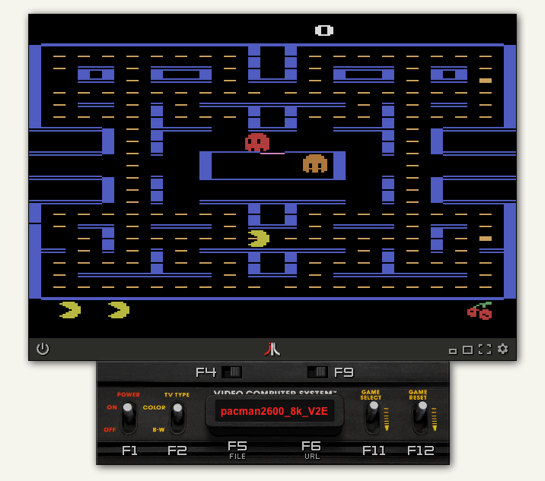
Javatari is now Javatari.js! The emulator has been completely rewritten, and is now 100% in HTML5 and Javascript.
Javatari.js is a multiplayer Atari 2600 emulator written in pure Javascript/HTML5 with no external libs.
Features and Highlights:
New in version 0.91:
Download: Javatari.js v0.91 (2283)
source: javatari.org
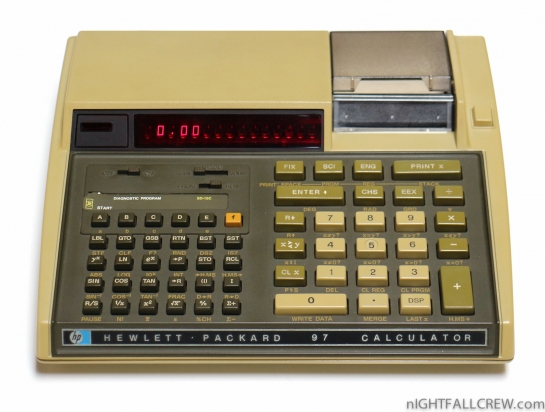
Gallery:
The HP-67 was a magnetic card-programmable handheld calculator, introduced by Hewlett-Packard in 1976 at an MSRP of $450. A desktop version with built-in thermal printer was sold as the HP-97 at a price of $750.
Marketed as improved successors to the HP-65, the HP-67/97 were based on the technology of the “20-series” of calculators (HP-25, HP-19C etc.) introduced a year earlier. The two models are functionally equivalent, and programs on magnetic cards can be interchanged between them.
Features:
The 67/97 provide a complete set of scientific, statistical and engineering operations, including trigonometrical, logarithmic and exponential functions, coordinate conversions, average/deviation etc.
The HP-67/97 series featured a program memory of 224 eight-bit words. The two extra bits per word compared to the HP-65′s six allowed the designers to store any program instruction in a single memory cell (“fully merged keycodes”) even if it required multiple keystrokes to enter (see image). Programs could include 20 labels, subroutines (3 levels deep), four flag registers, 8 comparison functions, and extended index and loop control functions.
At 15 digits, the display was wider than those of the predecessor models, although the decimal point was displayed on its own digit position. The HP-67 keys carry up to four functions each, accessed through “f”, “g” and “h” prefix keys (gold, blue and black labels, respectively). The model 97 had more (and larger) keys, therefore only two functions were assigned to each key. When interchanging magnetic cards between the HP-67 and the HP-97, the calculators’ software took care of converting the key codes, and emulated the 97′s print functions through the 67′s display.
The HP-67 is powered by a pack of three AA-sized nickel-cadmium rechargeable batteries. Owing to the power requirements of the built-in thermal printer, the HP-97 employs a larger battery pack and more powerful charger.
Memory and programming:
Of the 26-register data memory, the first ten (“primary registers”) could be accessed directly, ten more as an alternate register set, and the remaining six had special functions for statistical operations and as an index register. Using the latter, a program could access all 26 registers as a single indexed array. Data memory is not permanent as in later models, i.e. register contents and program are lost when powering off.
The built-in magnetic card reader/writer could be used to save programs and data, with the ability to combine data from multiple cards. The same magnetic card format was later used for the HP-41C which offered compatibility to the 67/97 through software in the card reader. HP offered a library of programs supplied on packs of pre-recorded magnetic cards for many applications including surveying, medicine, as well as civil and electrical engineering.
In addition to software and support from HP, an active user community supported the HP67/97 as well as the other HP programmables of the era. The group was called PPC and produced the PPC Journal. One of the notable contributions of the group was the development of a “Blackbox” that allowed pseudo-alphanumeric displays.
Gallery (Before cleaning):
Gallery (Replacement Drive wheel & Battery):
Gallery (Under the Cover):
Download:
source: wikipedia.com hpmuseum.org
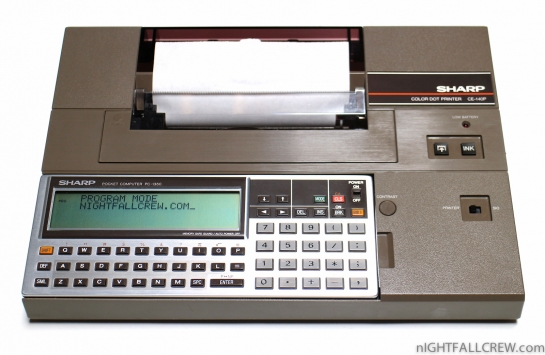
For this donation i thank: Andrea C. from Trieste.
The Sharp PC-1360 is a small pocket computer manufactured by Sharp. it can also be considered as an electronic calculator.
The PC-1360 was introduced in 1987 and was used by engineers, and favored by programmers for its decent programming and graphical capabilities. It was the top model of the (very small, only two models) 13XX series. It has a LCD display with four lines, also the SC61860 CPU, two RAM extension slot which work with the cynox RAM cards, a 15 pin serial interface and also a powerful BASIC. This is the best models for graphic applications.
Gallery:
source: computinghistory.org.uk
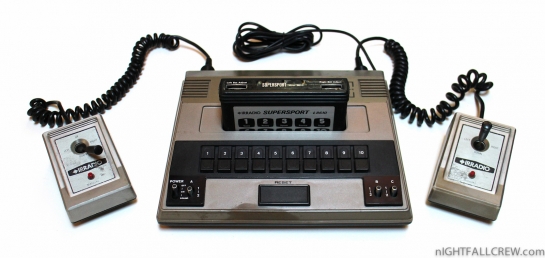
For this donation i thank: Paolo Cognetti from Roma.
This is a 3rd generation pong color system. It uses the usual 10 games cartridge: Tennis, Hockey, Squash, Practice, Soccer, Basketball, Basketball Practice, Gridball, Traget 1 & 2.
You can find this system everywhere in Europe though it´s origin once was Hongkong. This is a color variant sold by Irradio in Italy.
Gallery:
source: pong-picture-page.de
Sorry, this entry is only available in Italian.
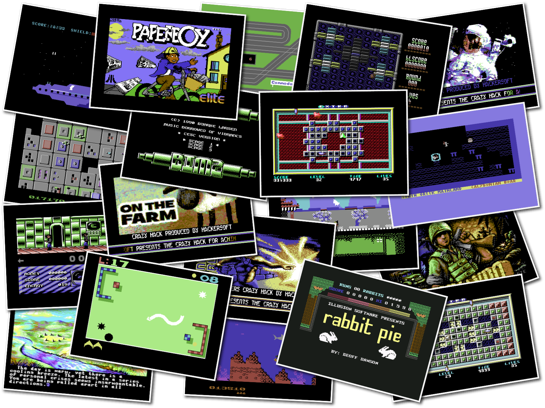
Some new games or tools (Cracked / Trained or Unrealeased) for Commodore 64 have been released from your favorites groups.
Titles:
Download: All Games in One Archive (3411)
source: csdb.dk

This is the official demo party results from Revision 2015 (Top 3 Entries only). See also the CSDB Revision 2015 section for more informations.
C64 4K Intro:
Mixed Graphics:
Mixed Music:
Mixed Demo:
Download: Revision 2015 Party stuff (1376)
source: 2015.revision-party.net
Recent Comments